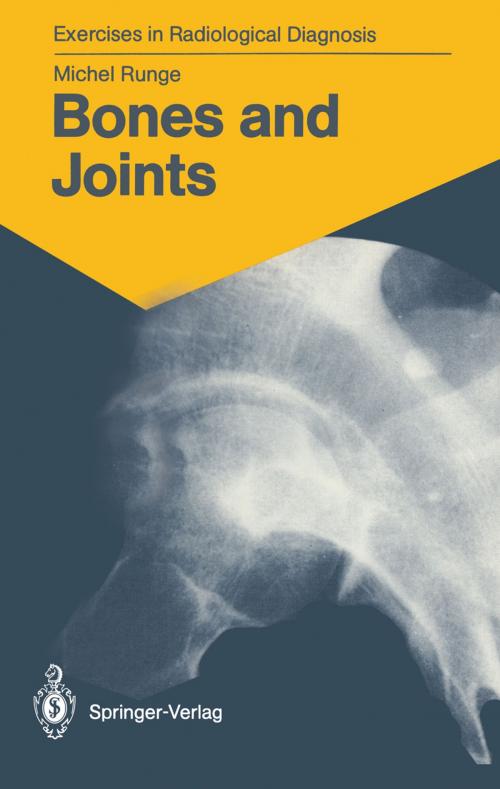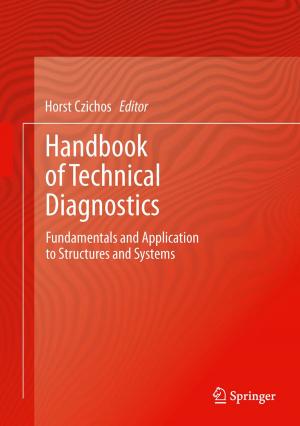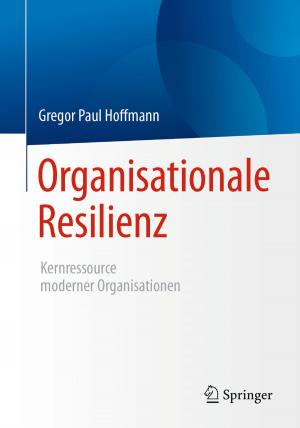Bones and Joints
170 Radiological Exercises for Students and Practitioners
Nonfiction, Health & Well Being, Medical, Medical Science, Biochemistry, Specialties, Orthopedics| Author: | Michel Runge | ISBN: | 9783642858185 |
| Publisher: | Springer Berlin Heidelberg | Publication: | December 6, 2012 |
| Imprint: | Springer | Language: | English |
| Author: | Michel Runge |
| ISBN: | 9783642858185 |
| Publisher: | Springer Berlin Heidelberg |
| Publication: | December 6, 2012 |
| Imprint: | Springer |
| Language: | English |
Osteoarticular pathology is a very frequent motive for consultation. Very often, the diagnosis relies upon symptomatology, and the physi cian requires confirmatory radiological investigations. Whatever the clinical indication, the interpretation of radiological data must be very rigorous. On the basis of a complete description of the radiographic images, according to a systematic analysis plan, a certain number of diagnostic hypotheses may be proposed. Selection of the most likely hypothesis requires the correlation of clinical, biological, and radiological data, and may sometimes necessi tate additional investigations, such as tomograms, scintigrams, and computed tomography (CT). 1 Part One Iconography 3 3 1 2 4 5 5 6 6 7 8 b a 8 a 9 10 11 12 10 13 14 11 15 a b 12 a c 13 17 b a c 14 15 c 16 17 23 21 a 22 b 18 19 20 21 22 23 33 34 24 25 37 38 26 27 40- 43 28 29 46 30 48 47 31 49 50 32 33 52 a b c 34 53 a b d c 35 54 a b 36 37 55 a 38 55 b c 39 56 57 40 58 41 60 61 42 43 63 64 44 65 66 45 67 68 46 69 a b 47 70 71 48 73 49 74 75 50 76 77 51 78 79 52 80 a b c 53 81 82 54 83 84 55 85 86 S6 87 88 57 89 90 58 91 92
Osteoarticular pathology is a very frequent motive for consultation. Very often, the diagnosis relies upon symptomatology, and the physi cian requires confirmatory radiological investigations. Whatever the clinical indication, the interpretation of radiological data must be very rigorous. On the basis of a complete description of the radiographic images, according to a systematic analysis plan, a certain number of diagnostic hypotheses may be proposed. Selection of the most likely hypothesis requires the correlation of clinical, biological, and radiological data, and may sometimes necessi tate additional investigations, such as tomograms, scintigrams, and computed tomography (CT). 1 Part One Iconography 3 3 1 2 4 5 5 6 6 7 8 b a 8 a 9 10 11 12 10 13 14 11 15 a b 12 a c 13 17 b a c 14 15 c 16 17 23 21 a 22 b 18 19 20 21 22 23 33 34 24 25 37 38 26 27 40- 43 28 29 46 30 48 47 31 49 50 32 33 52 a b c 34 53 a b d c 35 54 a b 36 37 55 a 38 55 b c 39 56 57 40 58 41 60 61 42 43 63 64 44 65 66 45 67 68 46 69 a b 47 70 71 48 73 49 74 75 50 76 77 51 78 79 52 80 a b c 53 81 82 54 83 84 55 85 86 S6 87 88 57 89 90 58 91 92















